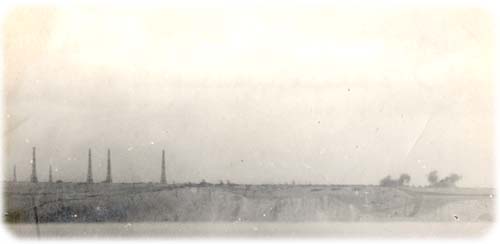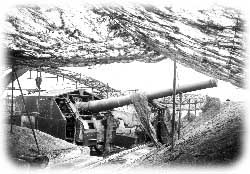Cross Channel Shelling, World War Two

In the Second World War, only 22 miles distanced Dover from Nazi-occupied France.
From 1940 to 1944, the German long range guns across the Channel shelled Dover.
This photograph, taken from Cap Gris Nez on the French Coast, shows the Chain Home radar installation at Swingate, Dover. The Germans had batteries at Cap Gris Nez and on the right of the picture German shells can be seen.
The radar station, made up of transmitting and receiving towers, was part of a string of such installations along the coast to provide early warning of air offences. It was an important target for the German guns on the French coast.

By September 1940 nine German batteries had been established on the French coast facing Dover. As well as strengthening coastal defences it was clearly necessary to provide guns to counter the German long-range guns. Four 14-inch guns, spares from the battleship 'King George V', were available and the Royal Marine Siege Regiment, commanded by Lt. Colonel H. D.
Fellowes arrived at St. Margaret's near Dover in early July to prepare for the installation of the first gun. Due to interest taken in the gun by Churchill it was nicknamed Winnie and was ready for action on 7th August 1940, although it was not permitted to fire until 22nd August, ten days after the first German shell had crossed the Channel to land on Dover. This photograph is of Pooh, the second 14-inch gun at St. Margaret's, during its construction, 1941
Opening Hours
- April-September
9.30am-5pm Monday to Saturday
10am-3pm Sunday
- October-March
9.30am-5pm Monday to Saturday
Closed Sunday
- Closed Christmas Day, Boxing Day and New Year's Day.
Free Admission